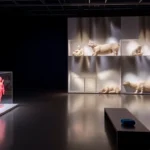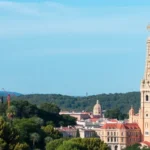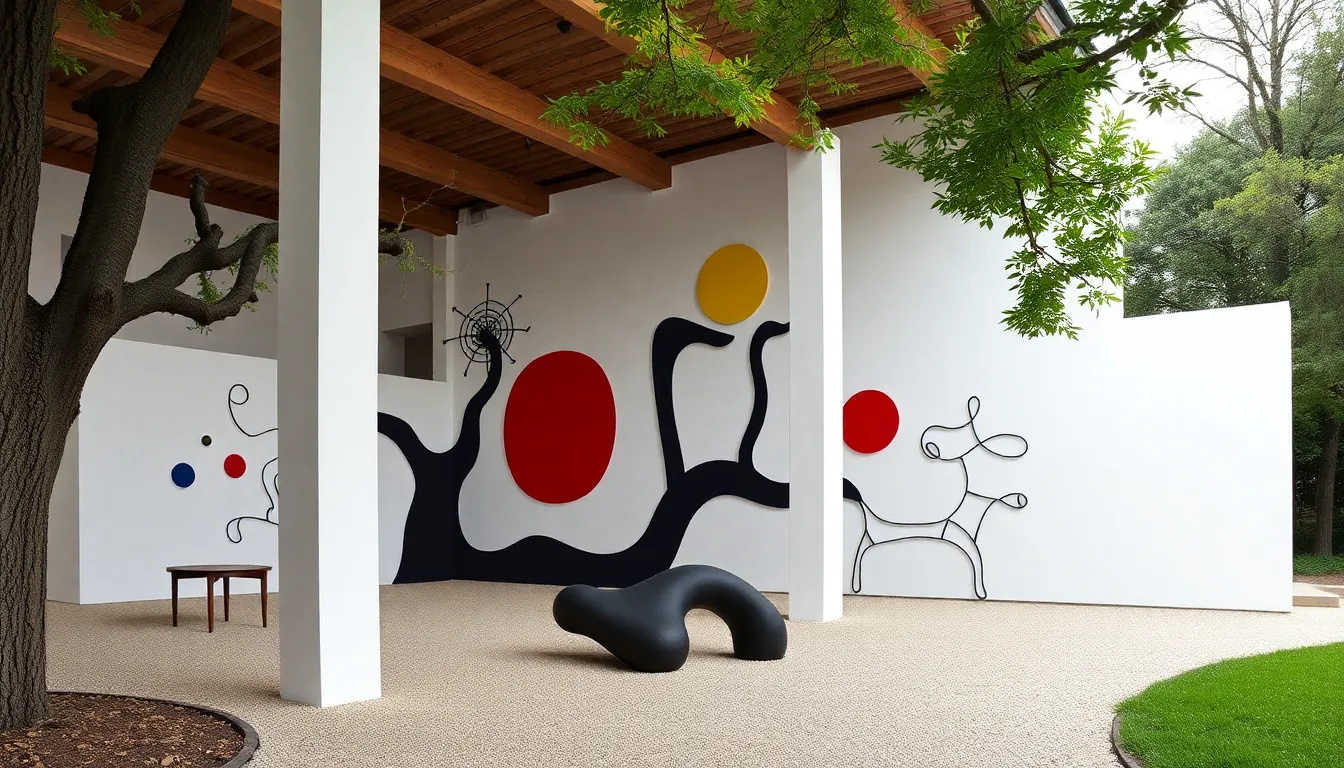
The Fundació Joan Miró stands as an emblematic institution in Barcelona, dedicated to the rich and innovative legacy of the renowned Catalan artist Joan Miró. Since its inception in 1975, the foundation has served not only as a museum but also as a dynamic space for cultural exchange and artistic experimentation. Established following a landmark exhibition in 1968, the foundation's mission is to promote knowledge and appreciation of contemporary art across various mediums.
An overview of the exhibitions
The Fundació Joan Miró boasts an impressive collection consisting of over 14,000 pieces, which includes a diverse array of paintings, sculptures, textiles, ceramics, and drawings. This extensive collection offers visitors a comprehensive insight into Miró's artistic evolution and his enduring impact on the art world.
In addition to Miró's own works, the foundation features pieces from other significant artists, enhancing its role as a hub for modern art. Among these are:
- Marguerite and Aimé Maeght
- Pierre Matisse
- Manuel de Muga
- Josep Lluís Sert
- Francesc Farreras
- Josep Royo
- Gérald Cramer
- David Fernández Miró, the artist's grandson
This blend of works allows for an enriching experience, showcasing how Miró's influence extends beyond his own creations, intertwining with the broader narrative of modern art.
Visiting the Fundació Joan Miró
For those captivated by the life and work of Joan Miró, a visit to the Fundació is essential. The museum is not just a space for viewing art; it is a a vibrant educational platform. Here, art enthusiasts can engage with a variety of programs that explore Miró's techniques, themes, and the artistic movements he was part of.
To enhance the visitor experience, the foundation offers:
- Guided tours that delve into the nuances of Miró's work
- Workshops for all ages, allowing participants to create their own art inspired by Miró's style
- Lectures and talks featuring prominent art historians and contemporary artists
Such initiatives underline the foundation's commitment to fostering a deeper understanding of Miró's art and its relevance in today's cultural landscape.
Location and accessibility
The Fundació Joan Miró is situated on the beautiful Montjuïc hill, a location that not only offers stunning views of the city but also places visitors within a cultural nexus of Barcelona. It is easily accessible via public transport, with several metro and bus lines serving the area.
For those traveling from the city center, a short ride on the metro will bring you to the nearest station, followed by a pleasant walk through the scenic park that surrounds the museum. This journey adds to the overall experience, as visitors can immerse themselves in the artistic ambiance of Montjuïc.
Free admission and special events
Recognizing the importance of making art accessible to everyone, the Fundació Joan Miró offers free admission on the first Sunday of each month. This initiative allows individuals and families who may not otherwise have the means to visit the museum to explore the rich heritage of Miró's work.
In addition to regular exhibitions, the foundation often hosts special events, temporary exhibitions, and cultural activities. Some highlights include:
- Seasonal exhibitions featuring contemporary artists inspired by Miró
- Outdoor installations and performances
- Collaborations with other cultural institutions
These events not only celebrate Miró's legacy but also engage the community in ongoing dialogues about art and creativity.
Joan Miró's artistic journey
Born in Barcelona in 1893, Joan Miró's artistic journey is characterized by a profound exploration of color, form, and abstraction. His distinctive style evolved through various phases, influenced by movements such as Surrealism and Dada. Miró's work is often celebrated for its playful, childlike qualities combined with profound philosophical depth, making him one of the most important figures in modern art.
Throughout his career, Miró sought to challenge traditional artistic conventions, often incorporating non-traditional materials and techniques. This experimental approach is evident in his use of:
- Bold, vivid colors
- Organic shapes and forms
- Symbolic imagery drawn from dreams and subconscious thoughts
As a result, his works continue to resonate with audiences, inviting them to explore their meanings and emotional impacts.
Miró's influence on contemporary art
The legacy of Joan Miró extends far beyond his lifetime, shaping the trajectory of contemporary art. Artists today draw inspiration from his innovative techniques and conceptual approaches, reflecting his lasting impact on the art world. His ability to fuse the abstract with the tangible has encouraged new generations of artists to explore similar avenues.
Furthermore, Miró's commitment to merging art with social and political commentary remains relevant, encouraging artists to respond to the world around them. This aspect of his work is particularly significant in today's context, where art serves as a powerful medium for social change.
To gain a deeper understanding of Miró's work and its relevance, consider watching this insightful video:
Conclusion: A living legacy
The Fundació Joan Miró is not merely a museum; it is a living testament to the artist's enduring spirit. Through its dedication to education, collaboration, and community engagement, the foundation continues to inspire and cultivate appreciation for the arts. A visit to this institution is an invitation to explore not only Miró's work but also the broader landscape of contemporary artistic expression.
 Blau Museum: Discover Contemporary Art and Culture
Blau Museum: Discover Contemporary Art and Culture Gaudí House Museum: Explore the Artistic Legacy of Gaudí
Gaudí House Museum: Explore the Artistic Legacy of Gaudí Tibidabo: A Guide to Barcelona's Iconic Mountain and Amusement Park
Tibidabo: A Guide to Barcelona's Iconic Mountain and Amusement Park Barcelona photo gallery
Barcelona photo galleryIf you want to know other articles similar to Joan Miró Foundation you can visit the category WHERE YOU CAN GO.
Deja una respuesta










Read more!